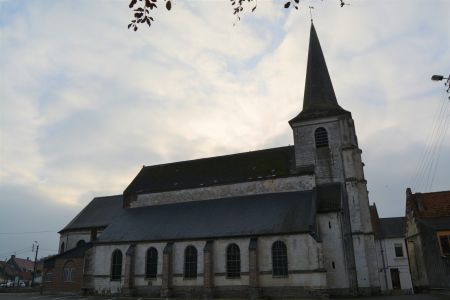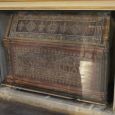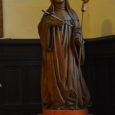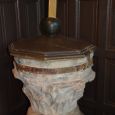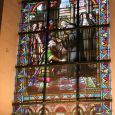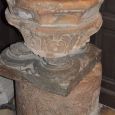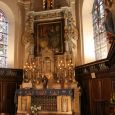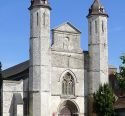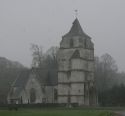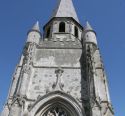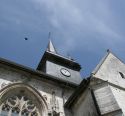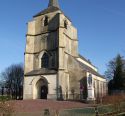Church | | Neoclassical | Catholic Church



Map
Opening hours
01 October - 31 March
Mon
Tue
Wed
Thu
Fri 14.00 - 17.00
Sat 14.00 - 17.00
Sun 14.00 - 17.00
01 April - 30 September
Mon 10.00 - 17.00
Tue 10.00 - 17.00
Wed 10.00 - 17.00
Thu 10.00 - 17.00
Fri 10.00 - 17.00
Sat 10.00 - 17.00
Sun 10.00 - 17.00
Description
In the 7th century, Blangy-sur-Ternoise (then Blangiacium) became a county under King Clovis II, and one of the 7 fortresses of the Ternois region. Blangy-sur-Ternoise's development then began, thanks in particular to a figure who had become the town's identity: Saint Berthe. In 682, on the death of her husband, she transformed the castle she had received as a dowry into an abbey for Benedictine nuns. This first abbey was destroyed by the Norman invasions two centuries later. Benedictine monks settled there in 1031, until the French Revolution. Most of the buildings, including the abbey church, were subsequently destroyed. Only a few traces are still visible today. The current abbey stands on the site of the old abbey farm.
In 1537, Charles V's troops set fire to the parish church, which in the Middle Ages had been built ‘upside down’, with the choir in place of the bell tower. It was not restored until the 18th century, at the behest of the monks of the abbey, in the neoclassical style recognisable by the Ionic capitals on the pillars of the nave. This time, the choir faces east.
It is richly furnished and remarkably decorated: the high altar, its altarpiece, the stalls, the holy water font, the baptismal font with the coat of arms of Father Leurin, the first mitred abbot, the confessional and the pulpit.
Although the church is dedicated to Saint Gilles, it is also the church of Saint Berthe, who can be seen in the painting in the altarpiece of the main altar, in the stained glass windows in the choir, among the statues, and above all in the shrine containing her relics, protected by a window and a wrought iron grille. The Novena organised in July to mark the feast of Saint Berthe is a not-to-be-missed event in the region.
Take a stroll around this commune of 730 inhabitants, which was awarded the Village Patrimoine label in 2021, and you'll discover other places linked to Saint Berthe.
Translated with www.DeepL.com/Translator (free version)
Photos
Remarkable elements
The reliquary of St. Berte
This carved oak reliquary was installed in 1606 by Abbot Baudouin Lallemand. Shaped like a chest and with a roofed lid, it preserves the remains of the body of Saint Berthe, founder of the abbey - which bears her name - located a few streets from the church. Decorated with gold thread embroidery on red velvet in 1627, it bears the inscription "Sancta Berta" and "Ora Pro Nobis" on each long side, as well as the portrait of Saint Barbara and that of an abbot on the sides.
Two other shawls of the same design are on display in the Tournai Museum. They are said to be the work of the embroiderer Ladan, so can the Blangy reliquary be attributed to this same artist?
This reliquary was only brought out on the occasion of the Novena which takes place every year in July.
Translated with www.DeepL.com/Translator (free version)
Statue of Saint Berte
Formerly painted black, this 19th century statue has been restored to its wooden colour thanks to the work carried out by Father Demont, parish priest from 1966 to 2004.
Translated with www.DeepL.com/Translator (free version)
The baptismal font
They consist of two parts: the octagonal bowl sculpted with geometric motifs and the square base on which are represented the arms of Abbot Leurin (a fretted coat of arms surmounted by an abbot's crook and a cross), the first mitred abbot of Blangy at the end of the 16th century. On the other sides are an inscription indicating "Pierre Leurin, abbot", the date "1590" and a circle, symbol of eternity.
Translated with www.DeepL.com/Translator (free version)
The stained glass windows
In 1846, Abbot Laisné decided to modernise the church's stained glass windows and thus give them a uniform character. The first stained glass windows were installed a few years later, following the same round arch architecture. The four windows in the choir depict St. Francis of Assisi as a full-length figure, St. Gilles as an abbot and two scenes from the life of St. Berthe.
Translated with www.DeepL.com/Translator (free version)
The lectern
The eagle is a symbol of Saint John the Evangelist, but also an emblem of strength and majesty. Thanks to its wings, the eagle can also be used to hold large books during the reading of the Word. This one comes from an old lectern, it holds a processional cross on its right wing and rests on a first square base with Ionic decoration, itself placed on a table with curved sides.
Translated with www.DeepL.com/Translator (free version)
The stoup
This octagonal piece of furniture is said to be sandstone from the tomb of Saint Omer, enriched with sculpture. Its base is said to come from an old blue marble column.
Translated with www.DeepL.com/Translator (free version)
The furniture
The church has a rich collection of furniture with remarkable decorations. Amongst these, the high altar, in Renaissance style and dated 1630 as indicated by the cartouches on the cornice, comes from the former chapel of the abbey. It is composed of several levels of reading. At the bottom, two angels surround the shrine of Saint Berthe, which is protected by a wrought iron grille and a glass case. On the tabernacle, Christ is represented as a shepherd. The altarpiece, of impressive dimensions, is composed in the centre of a painting of Saint Berthe at prayer with a model of an abbey. Three statuettes complete the decoration of this ensemble: the daughters of Saint Barbara (Gertrude and Deotile) who surround the painting and Saint Barbara at the top.
Das Chorgestühl aus gewachster Eiche weist Armlehnen mit recht eigenwilligen Figuren auf.
The confessional, installed in 1909, also has a special decoration, particularly on its pediment representing the movement of forgiveness and confession through the episode relating the return of the prodigal son*. In the centre, surrounding the Holy Spirit represented by a dove descending as if to give forgiveness, are two statues: Mary Magdalene on the right, represented in the guise of the forgiven sinner**, holding a cross and a vase placed at her feet, and a Dominican on the left. (*Luke 15, 11-32 - **Luke 7, 36-50).
The pulpit, installed in 1845, consists of a lace imitation lampshade topped by fire pots and decorated with light rays. The four Evangelists and their attributes are depicted on gilded sconces on the basin.
Translated with www.DeepL.com/Translator (free version)



